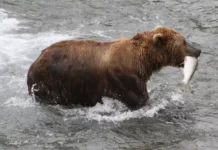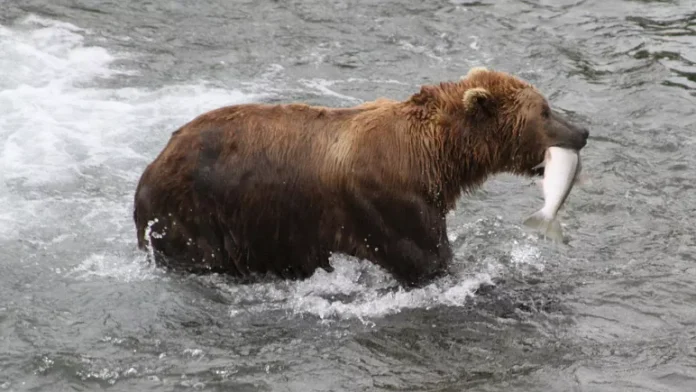Just before hibernation, brown bears eat as much as 20,000 calories per day, which adds about 4 kilograms per day to their weight. This is part of the bears’ strategy to survive long winters without food.
If humans did the same, they would experience dangerous weight gain and possibly develop diabetes, but the remarkable metabolism of hibernating bears prevents this from happening.
Professor Joanna L. Kelly, a researcher at Washington State University, told Euronews: “Many of us are quite fascinated by how bears can gain a lot of weight throughout the year and then go into hibernation and have the most energy during this period. that they have saved to use without significant weight gain and loss after waking up in the spring will have negative consequences for them.
He went on to say that one of the interesting things about bears is that they become resistant to insulin during hibernation but sensitive to this hormone at other times. The researcher said that this phenomenon means that the bears become reversible insulin resistance every year.
“Understanding this unique phenomenon could hold the key to treating insulin resistance and ultimately diabetes in humans,” Professor Kelly said. “If they do it without any negative consequences, maybe it will give us information about how to develop new treatments for humans.”
Professor Kelly went on to say that this is why the researchers investigated the incredible power of natural biology in the bodies of bears.
Together with a group of scientists, he identified eight key proteins found in humans that help bears control their insulin levels.
“They are known proteins that are shared between bears and humans, and I think a really important point is that these proteins are not unique to bears, which means it’s more likely that we can They used it as medicine.”
Many of us are quite fascinated by how bears can put on so much weight throughout the year and then go into hibernation to use up all of their stored energy without experiencing significant weight gain and loss after waking up. Sleeping in the spring will have negative consequences for them.
Professor Joanna L. Kelly, Washington State University researcher
What is insulin and how does it work?
Insulin is a hormone that regulates the concentration of glucose in the blood, and it does this by, for example, sending signals to the muscles, liver, and fat cells to absorb sugar. If a muscle is resistant to insulin, it will not be able to absorb sugar and convert it into energy.
The problem is that if too much sugar enters the body, our cells do not respond to insulin and become insulin resistant, leading to excess sugar in the blood. This is one of the main causes of type 2 diabetes, a disease that can lead to heart attacks, strokes and blindness.
But scientists have discovered that even when brown bears eat, they develop insulin resistance only afterward during hibernation, not during preparation, allowing them to escape diabetes. “We haven’t yet looked at metabolites that may play a very important role,” Professor Kelly said.
His team’s research focused on the bears’ semi-active, semi-hibernating season and did not cover transition points, such as now when the days are getting shorter and colder.
“I’m really curious to know what happens to the proteins at those transitions that we haven’t worked on yet, those transition points where all these signals are telling the bear to save as much energy as you can,” Professor Kelly said. He further said that these transition periods will tell a lot about how this process will be done.
Being inactive without muscle atrophy
Professor Kelly’s research group’s findings, published in iScience, also revealed a unique phenomenon that allows bears to remain inactive for very long periods of time while experiencing very little muscle atrophy.
Professor Kelly said that if humans were put on bed rest for even a very short period of time, this could have negative consequences for them, but the bears could lie for months without severe muscle atrophy.
Researchers attribute this to the fact that not all tissues in the bears become insulin resistant. Bears’ muscles appear to be insulin-sensitive year-round, while fat becomes insulin-resistant during their hibernation.
The whole phenomenon of insulin management in bears gives scientists a unique opportunity to better understand the disease of diabetes, and perhaps eventually figure out how to break insulin resistance in humans.

























































